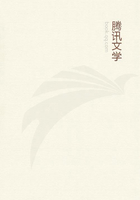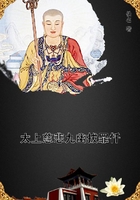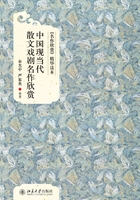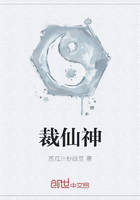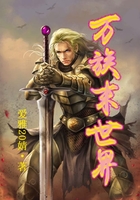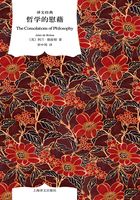Finally, climbing plants are sufficiently numerous to form a conspicuous feature in the vegetable kingdom, more especially in tropical forests. America, which so abounds with arboreal animals, as Mr. Bates remarks, likewise abounds according to Mohl and Palm with climbing plants; and of the tendril-bearing plants examined by me, the highest developed kinds are natives of this grand continent, namely, the several species of Bignonia, Eccremocarpus, Cobaea, and Ampelopsis. But even in the thickets of our temperate regions the number of climbing species and individuals is considerable, as will be found by counting them. They belong to many and widely different orders. To gain some rude idea of their distribution in the vegetable series, I marked, from the lists given by Mohl and Palm (adding a few myself, and a competent botanist, no doubt, could have added many more), all those families in Lindley's 'Vegetable Kingdom' which include twiners, leaf-climbers, or tendril-bearers. Lindley divides Phanerogamic plants into fifty-nine Alliances; of these, no less than thirty-five include climbing plants of the above kinds, hook and root-climbers being excluded. To these a few Cryptogamic plants must be added. When we reflect on the wide separation of these plants in the series, and when we know that in some of the largest, well-defined orders,such as the Compositae, Rubiaceae, Scrophulariaceae, Liliaceae, &c., species in only two or three genera have the power of climbing, the conclusion is forced on our minds that the capacity of revolving, on which most climbers depend, is inherent, though undeveloped, in almost every plant in the vegetable kingdom.
It has often been vaguely asserted that plants are distinguished from animals by not having the power of movement. It should rather be said that plants acquire and display this power only when it is of some advantage to them; this being of comparatively rare occurrence, as they are affixed to the ground, and food is brought to them by the air and rain. We see how high in the scale of organization a plant may rise, when we look at one of the more perfect tendril-bearers. It first places its tendrils ready for action, as a polypus places its tentacula. If the tendril be displaced, it is acted on by the force of gravity and rights it self. It is acted on by the light, and bends towards or from it, or disregards it, whichever may be most advantageous. During several days the tendrils or internodes, or both, spontaneously revolve with a steady motion. The tendril strikes some object, and quickly curls round and firmly grasps it. In the course of some hours it contracts into a spire, dragging up the stem, and forming an excellent spring. All movements now cease. By growth the tissues soon become wonderfully strong and durable. The tendril has done its work, and has done it in an admirable manner.
Footnotes:
{1} An English translation of the 'Lehrbuch der Botanik' by Professor Sachs, has recently (1875), appeared under the title of 'Text- Book of Botany,' and this is a great boon to all lovers of natural science in England.
{2} 'Proc. Amer. Acad. of Arts and Sciences,' vol. iv. Aug. 12, 1858, p. 98.
{3} Ludwig H. Palm, 'Ueber das Winden der Pflanzen;' Hugo von Mohl, 'Ueber den Bau und des Winden der Ranken und Schlingpflanzen,' 1827. Palm's Treatise was published only a few weeks before Mohl's. See also 'The Vegetable Cell' (translated by Henfrey), by H. von Mohl, p.
147 to end.
{4} "Des Mouvements revolutife Respontanes," &c., 'Comptes Rendus,' tom. xvii. (1843) p. 989; "Recherches sur la Volubilite des Tiges," &c., tom. xix. (1844) p. 295.
{5}'Bull. Bot Soc. de France,' tom. v. 1858, p. 356.
{6} This whole subject has been ably discussed and explained by H. de Vries, 'Arbeiten des Bot. Instituts in Wurzburg,' Heft iii. pp. 331, 336. See also Sachs ('Text-Book of Botany,' English translation, 1875, p. 770), who concludes "that torsion is the result of growth continuing in the outer layers after it has ceased or begun to cease in the inner layers."{7} Professor Asa Gray has remarked to me, in a letter, that in Thuja occidentalis the twisting of the bark is very conspicuous. The twist is generally to the right of the observer; but, in noticing about a hundred trunks, four or five were observed to be twisted in an opposite direction. The Spanish chestnut is often much twisted: there is an interesting article on this subject in the 'Scottish Farmer,' 1865, p. 833.
{8} It is well known that the stems of many plants occasionally become spirally twisted in a monstrous manner; and after my paper was read before the Linnean Society, Dr. Maxwell Masters remarked to me in a letter that "some of these cases, if not all, are dependent upon some obstacle or resistance to their upward growth." This conclusion agrees with what I have said about the twisting of stems, which have twined round rugged supports; but does not preclude the twisting being of service to the plant by giving greater rigidity to the stem.
{9} The view that the revolving movement or nutation of the stems of twining plants is due to growth is that advanced by Sachs and H. de Vries; and the truth of this view is proved by their excellent observations.
{10} The mechanism by which the end of the shoot remains hooked appears to be a difficult and complex problem, discussed by Dr. H. de Vries (ibid. p. 337): he concludes that "it depends on the relation between the rapidity of torsion and the rapidity of nutation."{11} Dr. H. de Vries also has shown (ibid. p. 321 and 325) by a better method than that employed by me, that the stems of twining plants are not irritable, and that the cause of their winding up a support is exactlywhat I have described.
{12} Dr. H. de Vries states (ibid. p. 322) that the stem of Cuscuta is irritable like a tendril.
{13}See Dr. H. de Vries (ibid.p. 324) on this subject.
{14} Comptes Rendus, 1844, tom. xix. p. 295, and Annales des Sc. Nat 3rd series, Bot., tom. ii. p. 163.


